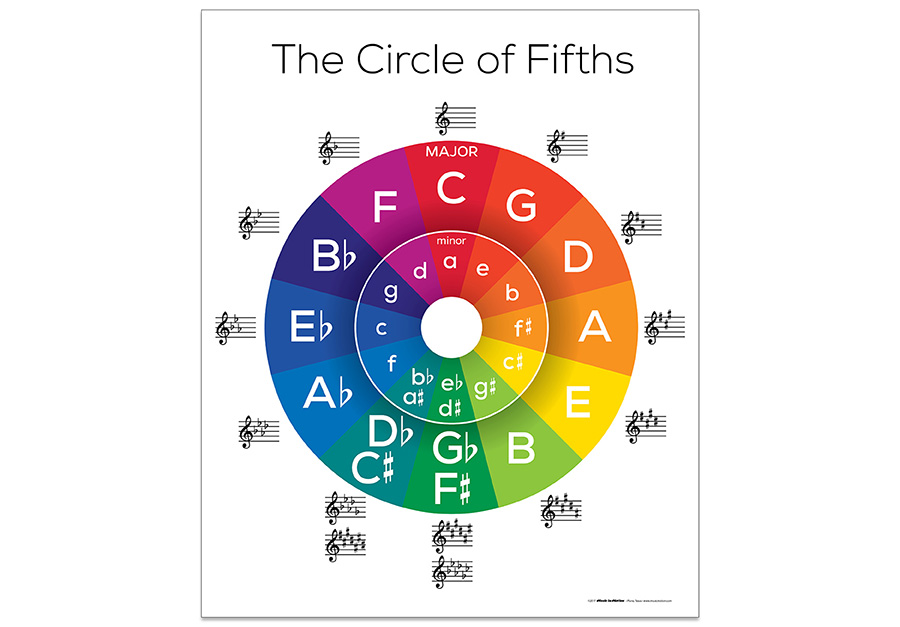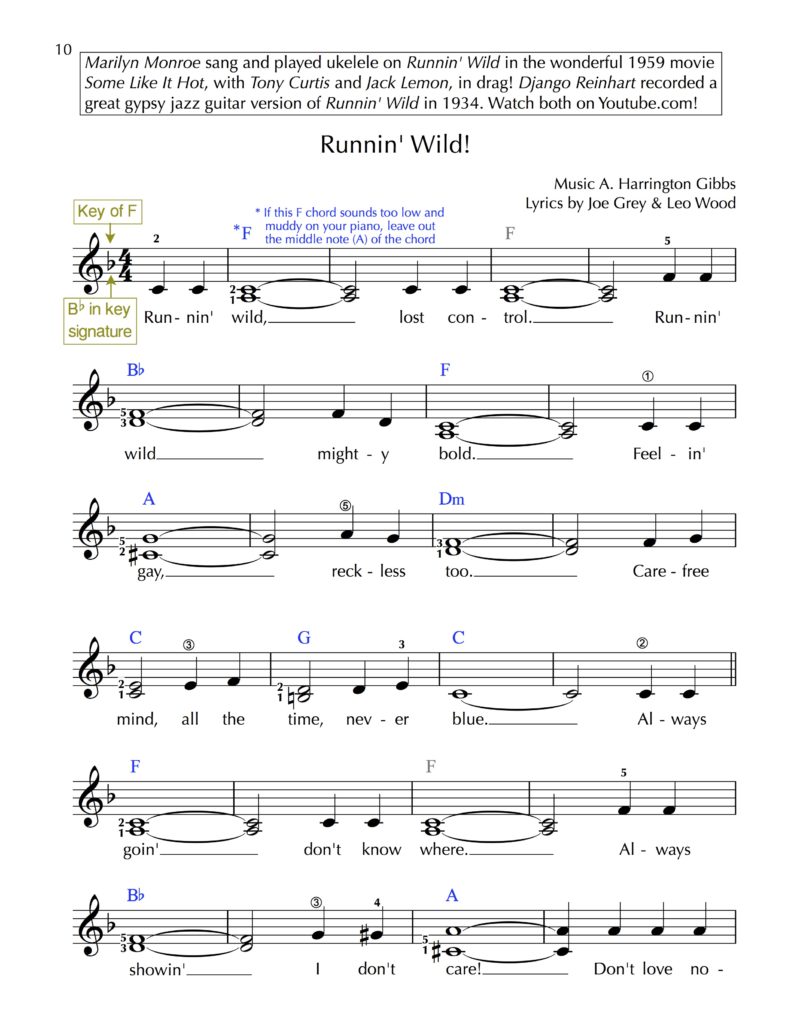
You may have heard of the phrase, The Circle of 5ths. It’s a useful tool for musicians to understand, and for composers and songwriters to use in their pieces. In Part 1 of this series on Composing and Songwriting, I suggested that you start by limiting your piece to just the chords which are built on the C scale (C, Dm, Em, F, G, Am, Bdim) and I provided you with a chart so that you could figure out the seven chords in any key. But perhaps you are now feeling that you want to step outside of the key. For example, if you are in the key of C and want to move to an unexpected B-flat major chord, you can use the circle of 5ths to help navigate your way back to the key of C.
I’m going to let my friend Fred Sokolow take it from here because he is the Circle of 5ths master. Start at 5:30 in the video below and continue on to the end if you would like to join him for his jam:
Fred is an crazy good multi-instrumentalist and has created a small vinyl cling decal of the circle of 5ths for $3 which you can purchase here. You can safely stick it to your piano because there’s no adhesive. (Fred also gives private online lessons in banjo, ukulele, guitar, mandolin and dobro if you are so inclined!) If you have a Paypal account would you consider “tipping” Fred to say thanks for today’s instruction here or search for Fred Sokolow on Venmo? Any amount even $1 or $2 would be appreciated! You can receive notice of Fred’s future mini lessons (there are a lot of great ones!) by joining his mailing list: sokolowmusic@gmail.com. For more jams and free lessons, follow Fred on Facebook.
In classical music there are many ways to structure a piece. Generally when you are starting out, you want to establish a primary theme, move to second theme, then come back to the first theme and end the piece. All of what I wrote about in Parts 1 (chords), 2 (melody), and 3 (melody and chords) are relevant to composing classical music, as well as the Circle of 5ths discussion above, as all melodic music is based upon chords. You can also add lyrics to your classical piece, as with an aria or operatic piece. Feel free to ask questions in our comments below, and please tell us how your songs and pieces are coming along! It would be great to emerge from the Covid quarantine with a few original songs or pieces under your belt!
With love and music, Gaili
Author, Upper Hands Piano: A Method for Adults 50+ to Spark the Mind, Heart and Soul


